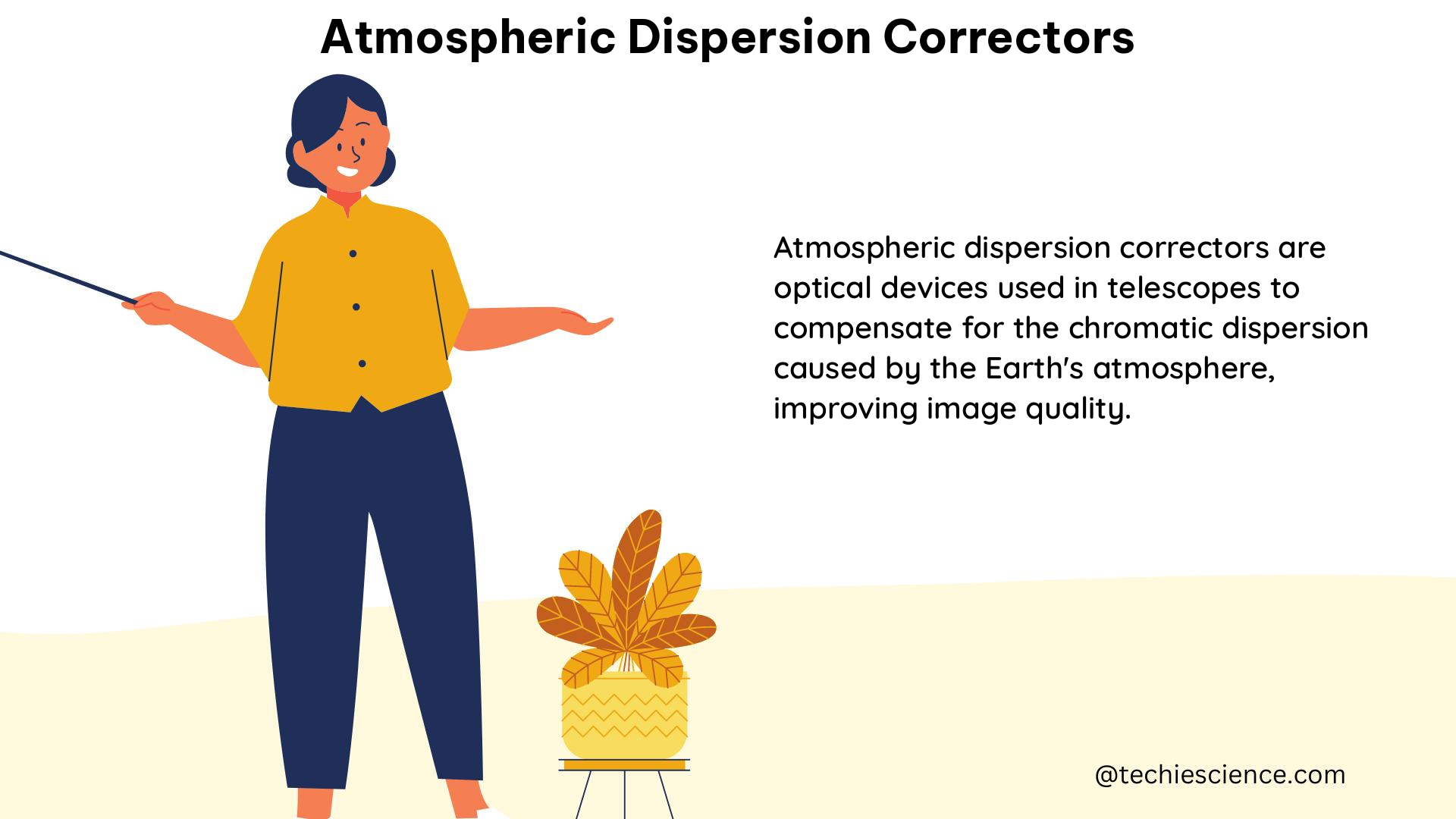Atmospheric dispersion correctors (ADCs) are essential tools in astronomy and astrophotography, as they mitigate the effects of atmospheric dispersion on light passing through the Earth’s atmosphere. This comprehensive guide delves into the technical details and quantifiable data surrounding ADCs, providing physics students with a valuable resource for understanding their importance and applications.
1. Impact on Radial Velocity (RV) Precision
1.1 RV Precision Degradation
Without an ADC, the systematic error on radial velocity (RV) measurements can exceed 1 m s^-1 for zenithal angles above 5°. However, with the use of an ADC, these errors can be reduced to below 0.2 cm s^-1, significantly improving the precision of RV measurements.
The degradation in RV precision without an ADC can be described by the following equation:
RV_error = k * tan(z)
where RV_error is the systematic error in the radial velocity measurement, k is a constant that depends on the specific atmospheric conditions, and z is the zenithal angle (the angle between the line of sight and the zenith).
1.2 Flux Correction Function
The flux correction function of an ADC can correct for atmospheric conditions, reducing systematic errors in RV measurements. However, this function is automatically switched off for zenithal angles above 40°, leading to increased errors in the RV data.
The flux correction function can be expressed as:
F_corr = exp(-k * sec(z))
where F_corr is the flux correction factor, k is a constant that depends on the atmospheric conditions, and z is the zenithal angle.
2. Atmospheric Dispersion Modeling

2.1 Filippenko’s Model
Filippenko’s model is a widely used atmospheric dispersion simulation tool that takes into account various atmospheric parameters, such as temperature, pressure, relative humidity, and zenithal angle. By varying the zenithal angle, the amount of atmospheric dispersion can be controlled and studied.
The Filippenko model can be expressed as:
d = k * (n_blue - n_red) * tan(z)
where d is the atmospheric dispersion, k is a constant, n_blue and n_red are the refractive indices of the atmosphere for blue and red light, respectively, and z is the zenithal angle.
3. ADC Performance
3.1 Dispersion Correction
An ADC can effectively correct for the dispersive effects of the atmosphere, reconverging light of different wavelengths at the focal plane of the telescope. This improvement in image resolution and reduction in spectral spread can be quantified by the following equation:
R_corr = R_obs / (1 + d / f)
where R_corr is the corrected image resolution, R_obs is the observed image resolution without an ADC, d is the atmospheric dispersion, and f is the focal length of the telescope.
3.2 Double Prism Arrangement
ADCs typically use a double prism arrangement to correct for atmospheric dispersion. This design allows for a smooth variation of dispersive power over a wide range, enabling precise control and optimization of the dispersion correction.
The dispersive power of the double prism ADC can be expressed as:
D = (n_1 - 1) * (1 - cos(α_1)) + (n_2 - 1) * (1 - cos(α_2))
where D is the dispersive power, n_1 and n_2 are the refractive indices of the two prisms, and α_1 and α_2 are the apex angles of the prisms.
4. Astrophotography Applications
4.1 Planetary Imaging
ADCs can significantly improve planetary images by reducing the effects of atmospheric dispersion, enabling finer details and better resolution. They are particularly useful for low-altitude observations, where the atmospheric dispersion is more pronounced.
The improvement in image quality can be quantified by the Strehl ratio, which is a measure of the image quality compared to a perfect, diffraction-limited image. The Strehl ratio can be expressed as:
Strehl = exp(-(2π * σ / λ)^2)
where σ is the root-mean-square (RMS) wavefront error, and λ is the wavelength of the observed light.
4.2 Colour Imaging
ADCs are also beneficial for color imaging, especially for blue-filtered images, as they reduce the spreading effect of shorter wavelengths. This can lead to improved color fidelity and reduced chromatic aberration in astrophotography.
The reduction in chromatic aberration can be quantified by the following equation:
Δx = f * (n_blue - n_red) * tan(z)
where Δx is the lateral chromatic aberration, f is the focal length of the telescope, n_blue and n_red are the refractive indices of the atmosphere for blue and red light, respectively, and z is the zenithal angle.
5. MICADO ADC
5.1 Refractive Index Measurement
The MICADO ADC, a state-of-the-art instrument, has the potential to lead to best-in-class measurements of the refractive index of atmospheric air. This capability can contribute to a deeper understanding of atmospheric dispersion and its effects on astronomical observations.
The refractive index of air can be expressed as:
n = 1 + k * (P / T) * (1 + a * (P / T))
where n is the refractive index, k and a are constants, P is the atmospheric pressure, and T is the absolute temperature.
By accurately measuring the refractive index, the MICADO ADC can provide valuable data for improving atmospheric dispersion models and enhancing the performance of ADCs in various astronomical applications.
References:
1. Atmospheric dispersion correction model requirements and impact on radial velocity measurements
2. Atmospheric dispersion correction for the MICADO instrument on the Extremely Large Telescope
3. Atmospheric dispersion correction for high-precision radial velocity measurements
4. Atmospheric Dispersion Corrector
5. Chapter 8: Atmospheric Dispersion Correction

The lambdageeks.com Core SME Team is a group of experienced subject matter experts from diverse scientific and technical fields including Physics, Chemistry, Technology,Electronics & Electrical Engineering, Automotive, Mechanical Engineering. Our team collaborates to create high-quality, well-researched articles on a wide range of science and technology topics for the lambdageeks.com website.
All Our Senior SME are having more than 7 Years of experience in the respective fields . They are either Working Industry Professionals or assocaited With different Universities. Refer Our Authors Page to get to know About our Core SMEs.